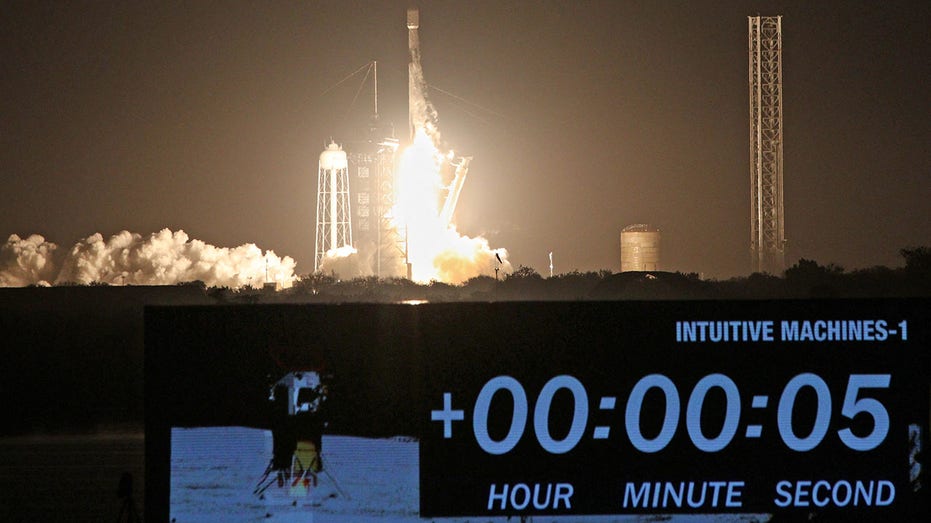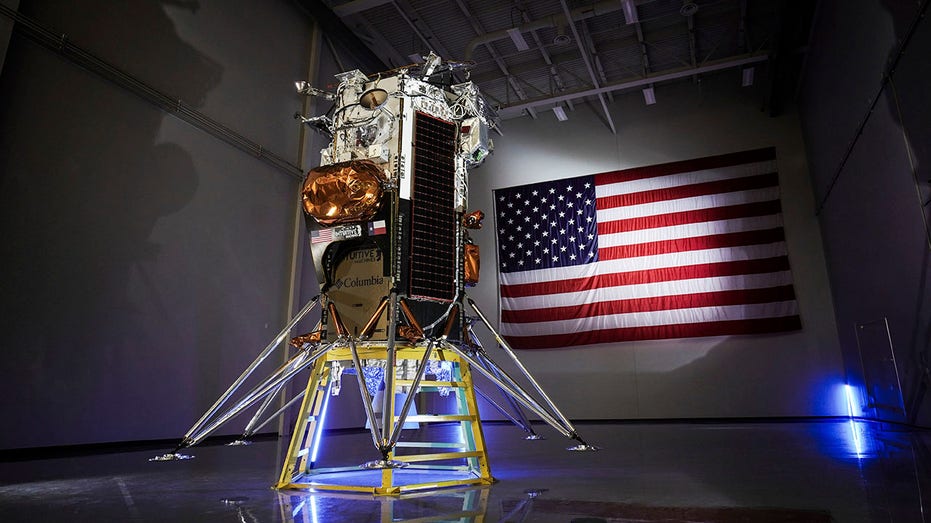A SpaceX rocket launched Thursday carrying Intuitive Machines’ Nova-C moon lander. (Credit: Reuters/NASA)
A SpaceX rocket carrying a lunar lander from Intuitive Machines blasted off Thursday morning from Florida in the latest attempt to put an American spacecraft on the moon since the last crewed Apollo mission more than 50 years ago.
The Houston-based company’s Nova-C lander, also referred to as Odysseus, lifted off shortly after 1 a.m. on a Falcon 9 rocket departing NASA’s Kennedy Space Center in Cape Canaveral. The launch unfolded after a lunar lander from Astrobotic Technology encountered propulsion difficulties during a mission in January and failed to reach the moon.
“Like an arrow from Cupid’s bow, the next commercial lunar delivery wings its way to the Moon,” NASA wrote on X alongside a video of the launch. “Six of our science and technology instruments are headed for the lunar southern highlands.”
A video clip posted by SpaceX showed the six-legged lander detaching from the rocket about 48 minutes into the journey Thursday. NASA says the lander in Intuitive Machines’ IM-1 mission is anticipated to land next Thursday in a “relatively flat and safe area near the Malapert A crater, in the south polar region of the Moon.”
ELON MUSK MOVES SPACEX TO TEXAS AFTER DELAWARE REVOKED HIS TESLA SALARY PACKAGE

A SpaceX Falcon 9 rocket lifts off from launch pad LC-39A at the Kennedy Space Center with the Intuitive Machines’ Nova-C moon lander mission, in Cape Canaveral, Florida, on Thursday, Feb. 15. (Gregg Newton/AFP via Getty Images / Getty Images)
The last time an American spacecraft touched down on the moon was in 1972 during the Apollo 17 mission.
Following the launch, Intuitive Machines said the lander was “successfully commissioned in space by establishing a stable attitude, solar charging, and radio communications contact with the Company’s mission operations center in Houston.”
ASTROBOTIC’S PEREGRINE MOON LANDER CRASHES INTO PACIFIC OCEAN

Intuitive Machines’ Nova-C lunar lander is seen in Houston in October 2023. (AP/Intuitive Machine / AP Newsroom)
“We are keenly aware of the immense challenges that lie ahead,” CEO Steve Altemus added. “However, it is precisely in facing these challenges head-on that we recognize the magnitude of the opportunity before us: to softly return the United States to the surface of the Moon for the first time in 52 years.”
NASA said in a statement that the instruments onboard the lander “will conduct scientific research and demonstrate technologies to help us better understand the Moon’s environment and improve landing precision and safety in the challenging conditions of the lunar south polar region, paving the way for future Artemis astronaut missions.”
CLICK HERE TO READ MORE ON FOX BUSINESS
“The payloads will collect data on how the plume of engine gasses interacts with the Moon’s surface and kicks up lunar dust, investigate radio astronomy and space weather interactions with the lunar surface, test precision landing technologies, and measure the quantity of liquid propellant in Nova-C propellant tanks in the zero gravity of space,” it added.



